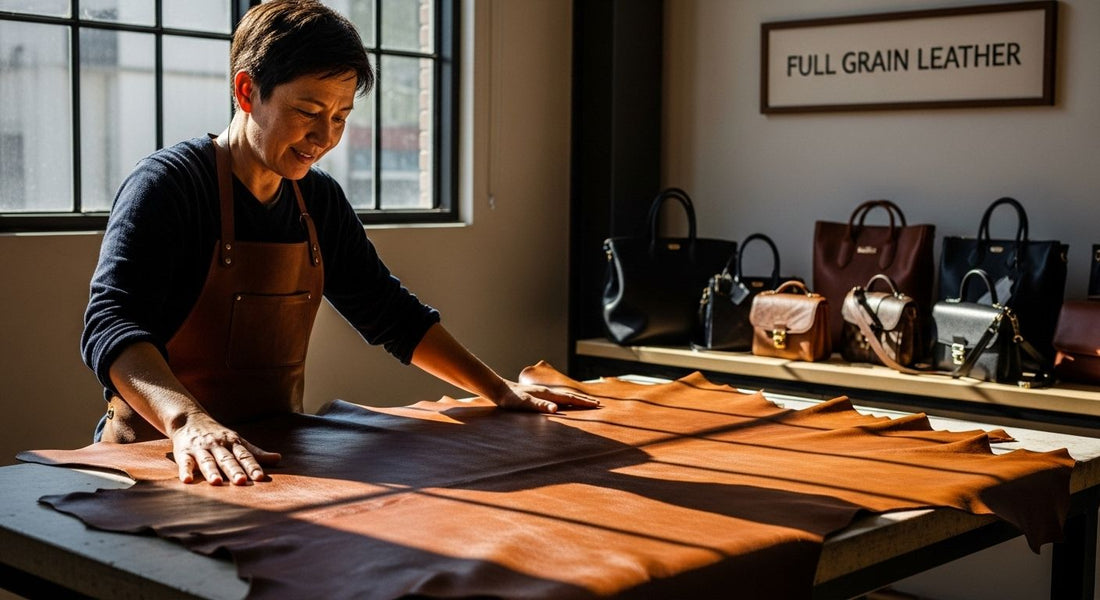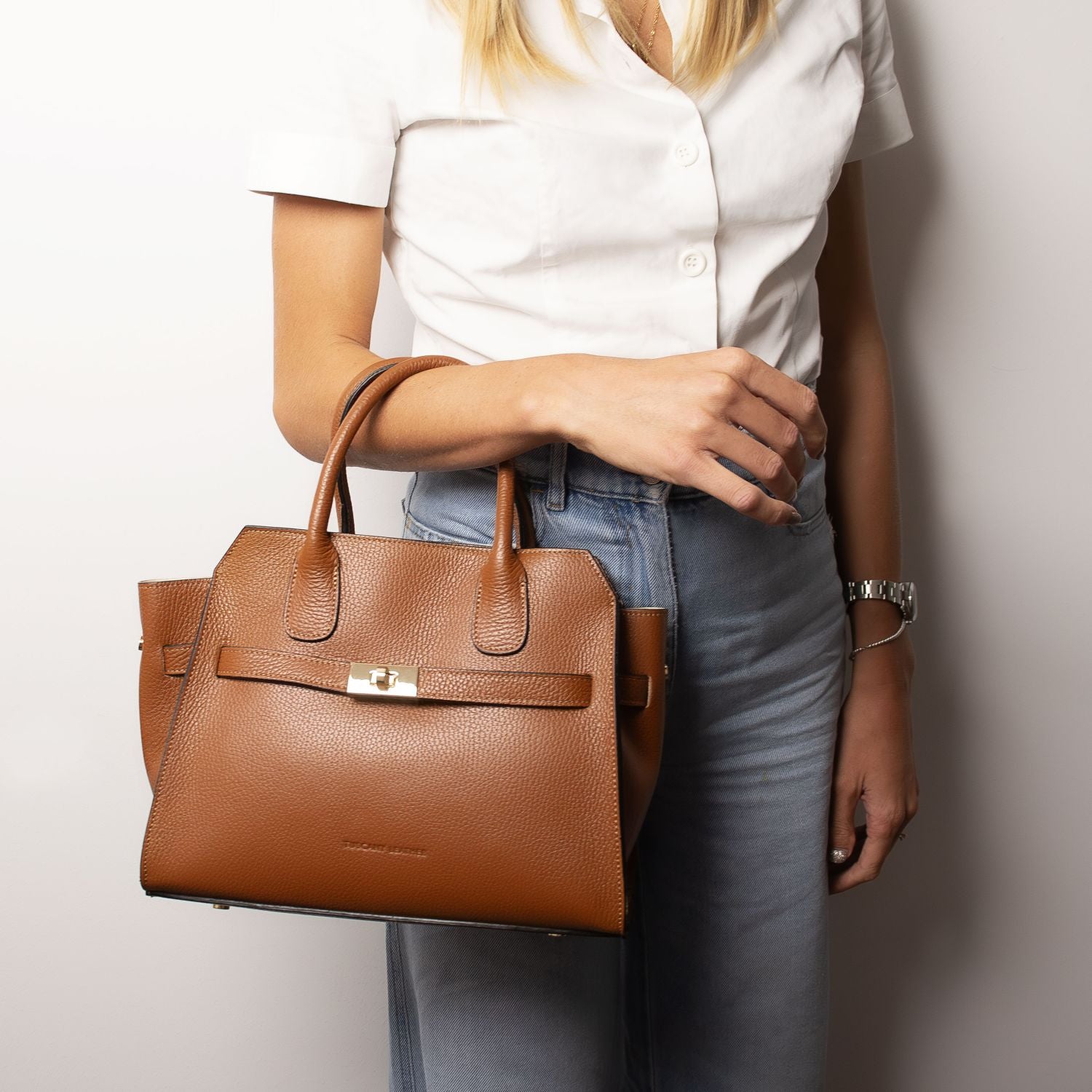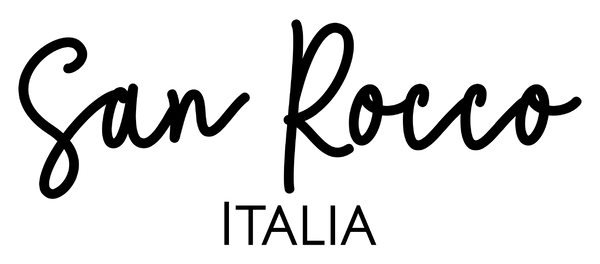
Understanding Full Grain Leather Meaning and Significance
Share
Full grain leather is seen as the gold standard in luxury goods, admired for its natural beauty and strength. Yet here is a detail that surprises most people. Nearly 99 percent of all leather hides come as by-products of the food industry, not from animals raised for their skin. This kind of leather does not just look and feel different. It carries a hidden story of sustainability and craftsmanship you might never have expected.
Table of Contents
- What Is Full Grain Leather And How Is It Different?
- The Importance Of Full Grain Leather In Luxury Fashion
- How Full Grain Leather Is Made: The Craftsmanship Behind It
- Key Features Of Full Grain Leather: Quality And Durability
- Why Choosing Full Grain Leather Matters For Sustainable Fashion
Quick Summary
| Takeaway | Explanation |
|---|---|
| Full grain leather offers superior durability. | It maintains the hide’s original structure, making it stronger and more resilient than processed leathers. |
| Each piece develops a unique patina over time. | The natural aging process enhances the leather’s beauty, giving it a distinct character that reflects individual use. |
| Full grain leather is a sustainable choice. | Utilising hides from the food industry prevents waste, supporting eco-friendly practices in fashion. |
| Natural imperfections signify quality craftsmanship. | The presence of unique markings on full grain leather indicates authenticity and artisanal skill, enhancing its appeal. |
| Investing in full grain leather means timeless elegance. | Its longevity and aesthetic evolution make it a valuable choice that transcends fleeting fashion trends. |
What is Full Grain Leather and How is it Different?
Full grain leather represents the highest quality and most authentic form of leather available in the luxury leather goods market. Unlike processed leather varieties, full grain maintains the entire original hide surface, including all natural markings, pores, and unique characteristics that tell the leather’s individual story.
The Essence of Full Grain Leather
Full grain leather is distinguished by its untouched top layer of animal hide, which remains completely unaltered during the leather production process. According to Leather Naturally, this means the leather retains its original grain surface, showcasing the most durable and resilient part of the hide.
Key characteristics of full grain leather include:
- Preserves natural surface texture and markings
- Develops a rich, unique patina over time
- Demonstrates superior strength and longevity
- Breathable and adaptable to temperature changes
Why Full Grain Leather Stands Apart
The distinguishing factor of full grain leather lies in its minimal processing. While other leather types are sanded, buffed, or artificially treated to remove imperfections, full grain leather celebrates the hide’s natural state. This approach ensures maximum structural integrity and allows the leather to age beautifully, developing a lustrous sheen that tells a story of craftsmanship and quality.
Research from Leather Research Laboratory confirms that the unaltered surface of full grain leather not only provides exceptional durability but also maintains breathability, making it superior to heavily processed leather alternatives.
The unique journey of full grain leather means each piece becomes more beautiful with use, developing a personal character that synthetic or heavily treated leathers cannot replicate. This characteristic makes full grain leather a hallmark of true luxury and expert craftsmanship in high-end leather goods.
The Importance of Full Grain Leather in Luxury Fashion
Luxury fashion has long revered full grain leather as the pinnacle of material excellence, representing an uncompromising commitment to quality, authenticity, and timeless craftsmanship. Its significance extends far beyond mere aesthetic appeal, embodying a deeper narrative of artisanal skill and material integrity.
Quality as a Fundamental Design Philosophy
In the realm of luxury fashion, full grain leather serves as more than just a material choice. According to Best Leather Research, it represents the toughest and most characterful leather, symbolising a brand’s dedication to unparalleled quality. Luxury brands deliberately select full grain leather to communicate their commitment to excellence through a material that inherently tells a story of durability and refinement.
Key attributes that elevate full grain leather in luxury fashion include:
- Unmatched material authenticity
- Natural imperfections that signify genuine craftsmanship
- Superior aging process that enhances aesthetic value
- Exceptional durability and resilience
The Tactile and Visual Narrative of Luxury
Research highlights that leather’s sensory experience plays a crucial role in its perceived luxury. According to studies from Bioresources Research, the roughness, softness, comfort, brightness, and aesthetic beauty of leather materials profoundly influence consumer perception.
Full grain leather offers a multisensory experience that synthetic materials cannot replicate. Its natural texture, subtle variations, and ability to develop a unique patina over time transform each piece into a personalised work of art. This characteristic makes full grain leather not just a material, but a narrative of individual journey and sophisticated taste.
The inherent quality of full grain leather transcends transient fashion trends, representing an investment in timeless elegance and sustainable luxury. By choosing full grain leather, fashion brands communicate a profound respect for traditional craftsmanship and a commitment to creating pieces that age gracefully, becoming more beautiful and meaningful with each passing year.
How Full Grain Leather is Made: The Craftsmanship Behind It
Full grain leather production represents a sophisticated journey of transformation, combining traditional craftsmanship with meticulous technical processes. This intricate method converts raw animal hides into premium leather that celebrates natural beauty and structural integrity.
The Origin of Leather: Sustainable Material Selection
According to Leather Naturally, approximately 99% of leather hides are by-products of the food industry, representing an environmentally conscious approach to material sourcing. This sustainable practice ensures that animal hides destined for leather production are effectively recycled, minimising waste and maximising resource utilisation.
Key stages in leather hide selection include:
- Careful assessment of hide quality
- Evaluation of animal health and skin condition
- Precise removal of hair and epidermis
- Preservation of natural grain surface
Transforming Raw Hides into Exquisite Leather
The leather production process involves multiple sophisticated stages designed to enhance the material’s durability, texture, and aesthetic appeal. Full grain leather preservation requires minimal intervention, maintaining the hide’s original surface characteristics.
The transformation process typically involves:
- Cleaning and preparing the raw hide
- Tanning to stabilise protein structures
- Controlled chemical treatments
- Careful drying and conditioning
The nuanced craftsmanship behind full grain leather production ensures that each piece retains its unique natural markings, creating a material that tells a story of authenticity and individual character. Unlike heavily processed leathers, full grain leather celebrates the organic variations inherent in natural materials, transforming what might be perceived as imperfections into distinctive design elements.
The table below summarises the main stages involved in transforming raw hides into full grain leather, providing a step-by-step overview of the craftsmanship described in the article.
| Stage | Description |
|---|---|
| Hide Selection | Careful assessment of hide quality and animal health |
| Hair and Epidermis Removal | Precise removal to preserve the natural grain surface |
| Cleaning | Preparation of raw hide for further processing |
| Tanning | Stabilising protein structures to enhance durability |
| Chemical Treatments | Applying controlled chemicals to maintain hide characteristics |
| Drying and Conditioning | Careful drying to ensure suppleness and retain natural markings |
By prioritising traditional techniques and minimal processing, artisans create leather that not only looks beautiful but also develops a rich, personalised patina over time. This approach represents a commitment to quality that transcends temporary fashion trends, producing leather goods that become more valuable and aesthetically pleasing with age.
Key Features of Full Grain Leather: Quality and Durability
Full grain leather stands as the pinnacle of leather quality, representing an extraordinary fusion of natural strength, aesthetic elegance, and remarkable longevity. Its unique characteristics set it apart from other leather types, making it a preferred choice for discerning craftsmen and luxury consumers who demand exceptional performance and timeless beauty.
The Structural Superiority of Full Grain Leather
According to Leather Research Laboratory, full grain leather is defined by its complete, unaltered hide surface, which retains the entire natural grain structure. This inherent characteristic ensures unparalleled durability and structural integrity that synthetic materials cannot replicate.

Key structural advantages include:
- Maximum tensile strength from preserved hide fibres
- Natural resistance to wear and tear
- Enhanced moisture-wicking capabilities
- Improved breathability compared to processed leathers
Aesthetic Evolution and Performance Characteristics
Full grain leather is not merely about durability but also about developing a unique aesthetic narrative. Each piece tells a distinctive story through its natural markings and ability to age gracefully. The leather’s surface becomes more beautiful over time, acquiring a rich patina that reflects its journey and usage.
Critical performance characteristics encompass:
- Ability to develop a personalised, rich colour depth
- Resistance to moisture and environmental factors
- Natural flexibility that increases with use
- Minimal degradation over extended periods
The remarkable quality of full grain leather transcends conventional material expectations. By preserving the hide’s original grain and minimal processing, artisans create a material that not only withstands rigorous use but also becomes more sophisticated and valuable with age. This extraordinary transformation represents the pinnacle of leather craftsmanship, where functionality meets aesthetic refinement in a truly exceptional material.
Why Choosing Full Grain Leather Matters for Sustainable Fashion
Sustainable fashion represents a critical evolution in the textile industry, with full grain leather emerging as a powerful symbol of environmentally conscious material selection and responsible consumption. By understanding its ecological impact, consumers can make informed choices that support both environmental preservation and exceptional product quality.
Transforming Waste into Valuable Resources
According to Leather Naturally, leather production is fundamentally a recycling process, preventing millions of tons of potential waste from entering landfills. By utilizing hides that would otherwise be discarded as meat industry by-products, full grain leather represents a sustainable approach to material sourcing that minimises environmental waste.
Key sustainability advantages include:
- Repurposing animal by-products from existing agricultural systems
- Reducing waste through comprehensive material utilisation
- Supporting circular economy principles
- Creating long-lasting products that resist frequent replacement
Longevity as an Environmental Strategy
Full grain leather’s exceptional durability transforms sustainability from a concept into a tangible environmental strategy. Unlike synthetic materials that deteriorate quickly and contribute to global waste, full grain leather products can endure decades of use, significantly reducing the carbon footprint associated with frequent product replacements.
Environmental benefits of choosing full grain leather encompass:
- Decreased manufacturing energy consumption
- Reduced demand for synthetic, petroleum-based materials
- Lower overall product lifecycle environmental impact
- Promotion of artisanal, low-waste production methods
By selecting full grain leather, conscientious consumers actively participate in a more sustainable fashion ecosystem. The material’s ability to age beautifully, coupled with its minimal processing and extraordinary longevity, represents a powerful alternative to disposable fashion culture. This approach celebrates craftsmanship, supports responsible production, and champions a more thoughtful relationship with the materials we choose to incorporate into our lives.

Experience True Full Grain Luxury With San Rocco Italia
Are you tired of investing in leather goods that fail to age gracefully or lack authentic character? As discussed in our exploration of full grain leather, true quality means more than surface appeal — it is about long-lasting strength, unique natural markings and a luxurious patina that only genuine full grain can offer. Yet many shoppers struggle to find accessories that truly embody these hallmarks of excellence.
The difference is clear: Each handbag and accessory at San Rocco Italia is meticulously crafted in Italy from premium full-grain leather. Our expert artisans use traditional techniques so every piece tells its own story and matures beautifully with time. When you choose San Rocco Italia, you are choosing luxury that endures and craftsmanship that speaks for itself.

Do not settle for ordinary when you can surround yourself with authentic European artistry. Discover our exclusive collection of handbags and leather goods and bring the enduring value of full grain leather into your everyday life. Visit San Rocco Italia now to invest in accessories that grow more beautiful as they become truly yours.
Frequently Asked Questions
What is full grain leather?
Full grain leather is the highest quality leather made from the complete, unaltered hide surface of an animal. It retains its natural grain, markings, and pores, showcasing authenticity and unique characteristics.
How does full grain leather differ from other types of leather?
Full grain leather differs from other types, such as top grain or corrected grain leather, in that it is minimally processed and retains the original surface. Other types may be sanded or treated to remove imperfections, compromising the leather’s natural qualities.
To help illustrate the differences between major types of leather, the following table compares full grain, top grain, and corrected grain leather according to key characteristics mentioned in the article.
| Leather Type | Processing Level | Surface Features | Durability | Aesthetic Evolution |
|---|---|---|---|---|
| Full Grain Leather | Minimal, unaltered | Natural markings, pores, and grain | Exceptional | Develops unique patina |
| Top Grain Leather | Sanded, lightly corrected | Fewer imperfections, more uniform | High, but less than full grain | Ages, but less distinct patina |
| Corrected Grain Leather | Heavily sanded/treated | Artificial finish, uniform appearance | Moderate | Minimal change over time |
What are the benefits of using full grain leather in fashion?
Full grain leather offers unmatched durability, develops a rich patina over time, is breathable, and showcases natural imperfections that signify craftsmanship. These characteristics make it a high-quality choice in luxury fashion.
How should I care for full grain leather products?
To care for full grain leather, clean it regularly with a soft cloth, avoid prolonged exposure to water, and apply a suitable leather conditioner to maintain flexibility and prevent drying out.
Recommended
- Origin of Full Grain Leather Archives


